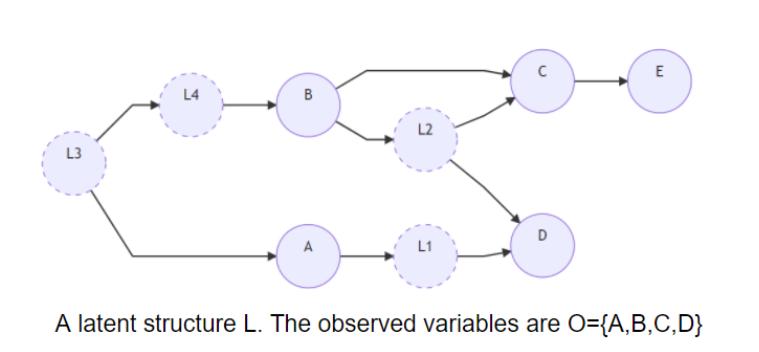Traditional causal inference graphical models make three key assumptions: faithfulness, sufficiency and acyclity (1/n)
Faithfulness (aka stability) means that the conditional independences are all implied by its associated causal graph. There are no & #39;accidental& #39; independencies.
Under reasonable assumptions, the faithfulness holds almost surely - so it is usually not questioned much
Causal sufficiency means that there are no unobserved common causes between the variables in our model - which would induce spurious correlations we cannot directly control for
Causal sufficiency is an unreasonable assumption - in practice, there will usually be unmeasured common causes in the systems we study.
The theory of causal inference without causal sufficiency is a recent but mature field of study. A common formalism to represent causal relations in this context are ancestral graphs, where unobserved common causes are represented as bidirected edges.
There exists algorithms such as FCI which can be used to (partially) learn ancestral graphs from data, and extensions of the do-calculus that deal with ancestral graphs to help us design unbiased observational studies
Finally, the third assumption is acyclity.
Acyclity is a very handy property - acyclic models can be represented as bayesian networks, have an intuitive graphical representation and unique solutions.
Acyclity is a very handy property - acyclic models can be represented as bayesian networks, have an intuitive graphical representation and unique solutions.
Sometimes we can get away without cycles by templating temporal relations.
But traditional econometric models do include cycles between variables like price and demand - and we would like as well.
But traditional econometric models do include cycles between variables like price and demand - and we would like as well.
So how can we allow cycles while preserving these properties? Bongers et al explore a subclass of possibly cyclic structural causal models that preserve these properties in & #39;Foundations of Structural Causal Models with Cycles and Latent Variables& #39;
They also point out that many of our causal inference algorithms for the case for latent variables work essentially without any major modification in the case for simple SCMs.
The jury is still out on whether simple SCMs will be of practical use, but they are definitely a step forward for the field.
And that is everything for today folks. We have seen the three main assumptions of causal graphical models (faithfulness, sufficiency and acyclity) and overviewed the work on addressing them. I hope this was an interesting journey for you!

 Read on Twitter
Read on Twitter





